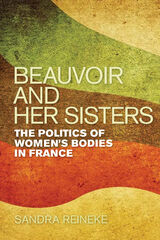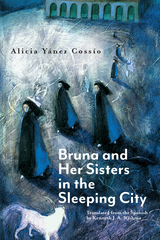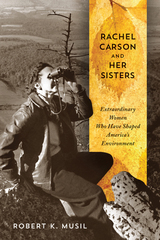4 books about Her Sisters

Beauvoir and Her Sisters
The Politics of Women's Bodies in France
Sandra Reineke
University of Illinois Press, 2011
Beauvoir and Her Sisters investigates how women's experiences, as represented in print culture, led to a political identity of an "imagined sisterhood" through which political activism developed and thrived in postwar France. Through the lens of women's political and popular writings, Sandra Reineke presents a unique interpretation of feminist and intellectual discourse on citizenship, identity, and reproductive rights.
Drawing on feminist writings by Simone de Beauvoir, feminist reviews from the women's liberation movement, and cultural reproductions from French women's fashion and beauty magazines, Reineke illustrates how print media created new spaces for political and social ideas. This sustained study extends from 1944, when women received the right to vote in France, to 1993, when the French government outlawed anti-abortion activities. Touching on the relationship between consumer culture and feminist practice, Reineke's analysis of a selection of women's writings underlines how these texts challenged traditional gender models and ideals.
In revealing that women collectively used texts to challenge the state to redress its abortion laws, Reineke renders the act of writing as a form of political action and highlights the act of reading as an essential but often overlooked space in which marginalized women could exercise dissent and create solidarity.
[more]

Bruna and Her Sisters in the Sleeping City
Alicia Yánez Cossío, Translated from the Spanish by Kenneth J. A. Wishnia
Northwestern University Press, 1999
Bruna and Her Sisters in the Sleeping City chronicles a wealthy, eccentric family with an ancient presence in northern Ecuador. Bruna’s past is dominated by ghosts and scandals that linger in the old family home in the mountains. As she pieces together the outrageous adventures of her ancestors and relatives, Bruna emerges from the husk of tradition to achieve a balance between the best of the old and the new. Tracing the complete history of Ecuador from the Conquest through the 1970s, the book is a seriocomic examination of the tensions and conflicts inherent in a world that wavers between its oppressive colonial past and its future as a modern society obsessed with material gain.
[more]

Mother Teresa's General Letters to Her Sisters
Brian Kolodiejchuk
Catholic University of America Press, 2024
Mother Teresa’s General Letters to Her Sisters is a collection of Mother Teresa’s circular letters to the members of her religious congregation, the Missionaries of Charity Sisters. Not intended for those outside her community, they were written informally and spontaneously, often with little editing. It was for Mother Teresa a way of “being present” to the members of her rapidly expanding religious order. Seemingly of little interest except for those to whom they were addressed, the letters reveal the spiritual depth and pragmatic leadership of one of the most popular modern saints, as well as the inner dynamics underlying one of the most flourishing religious congregations of the last century. At the same time, and perhaps surprisingly, these letters may also prove to be worthwhile reading for a wider audience.
Something of God’s wisdom and love seems to shine through Mother Teresa’s guidance and counsels, giving the reader light and help even though he or she is not living the same religious life as one of the Sisters. Mother Teresa’s unpolished statements are at times humble and at times humbling. They inspire confidence and encourage generosity. Many a time they are humorous but more often challenging. They are sprinkled with serene joy but also permeated with deep pain. She delighted in her Sisters’ accomplishments yet did not shy away from correcting even the smallest flaw, which didn’t escape her very observant eye. Sometimes she sounded just like a mother, full of tender loving care, and at other times more like a commander in chief, exhibiting an iron will and uncompromising determination. In either case, her followers seemed to have been drawn into the mystery of her charism, endeavoring to keep pace with her. Was it the attraction of what could be termed as her “leadership style” in the unremitting service of the poorest of the poor, or the perceived love of a mother’s heart that made her so unanimously loved and admired by the members of her congregation? Or was it both? The letters will reveal the answer!
Inspiring in their simplicity, the letters may well serve as a treasure trove where anyone from a reflective scholar to a caring mother of a family may find satisfaction for their spiritual palate. The attractiveness of perennial truth often makes Mother Teresa’s presentation of traditional spiritual themes likewise relevant for contemporary needs. In the context of Mother Teresa’s statement that “we are created for greater things, to love and to be loved’,” these letters will help the reader discover and experience God’s presence through the little miracles of His love in one’s daily life. They will inspire us “to put our love into living action,” sharing His love with all those we meet, and so make our lives “something beautiful for God.”
[more]

Rachel Carson and Her Sisters
Extraordinary Women Who Have Shaped America's Environment
Robert K. Musil
Rutgers University Press, 2015
In Rachel Carson and Her Sisters, Robert K. Musil redefines the achievements and legacy of environmental pioneer and scientist Rachel Carson, linking her work to a wide network of American women activists and writers and introducing her to a new, contemporary audience.Rachel Carson was the first American to combine two longstanding, but separate strands of American environmentalism—the love of nature and a concern for human health. Widely known for her 1962 best-seller, Silent Spring, Carson is today often perceived as a solitary “great woman,” whose work single-handedly launched a modern environmental movement. But as Musil demonstrates, Carson’s life’s work drew upon and was supported by already existing movements, many led by women, in conservation and public health.
On the fiftieth anniversary of her death, this book helps underscore Carson’s enduring environmental legacy and brings to life the achievements of women writers and advocates, such as Ellen Swallow Richards, Dr. Alice Hamilton, Terry Tempest Williams, Sandra Steingraber, Devra Davis, and Theo Colborn, all of whom overcame obstacles to build and lead the modern American environmental movement.
On the fiftieth anniversary of her death, this book helps underscore Carson’s enduring environmental legacy and brings to life the achievements of women writers and advocates, such as Ellen Swallow Richards, Dr. Alice Hamilton, Terry Tempest Williams, Sandra Steingraber, Devra Davis, and Theo Colborn, all of whom overcame obstacles to build and lead the modern American environmental movement.
[more]
READERS
Browse our collection.
PUBLISHERS
See BiblioVault's publisher services.
STUDENT SERVICES
Files for college accessibility offices.
UChicago Accessibility Resources
home | accessibility | search | about | contact us
BiblioVault ® 2001 - 2024
The University of Chicago Press









